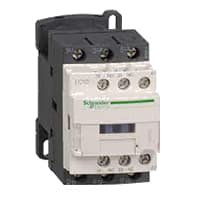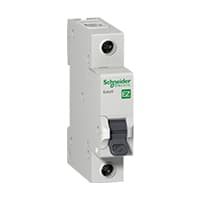Time delay relay wiring diagram:
This diagram shows how to make Time delay relay wiring diagram. In this circuit, we use two magnetic contactors, a delay timer, and an SP MCB ( Single Pole Miniature Circuit Breaker ). Here we need to connect the magnetic contactor with the power source and then connect on delay time and MCB. Now this circuit is ready for use. If you want to know more about this circuit please check our youtube video below the post.
Advertisements
Components needed For this Project:
You can get the components from any of the sites below:
- Magnetic Contactor 40A [See Buy Click Amazon]
- SP MCB 10A [See Buy Click Amazon]
- Digital Timer 220V AC [See Buy Click Amazon]
*Please note: These are affiliate links. I may make a commission if you buy the components through these links. I would appreciate your support in this way!
Advertisements
Components used to make the Time delay relay wiring diagram:
A magnetic contactor is an electromagnetic switching device. It is generally used for controlling 3-phase Motors. The operation of a magnetic contactor is similar to that of a Relay. but a relay is used for low-power or low-voltage connections, and a magnetic contactor is used for high-power or high-voltage connections. As soon as the supply is applied to the magnetic contactor coil. its normally open contacts are closed and normally closed contacts are opened and the associated devices are also operated. This is how a magnetic contactor works.
02. SP MCB:
In single-pole MCB, Switching and protection are Affected in only one Phase. Single phase supply to break the phase only. A single Pole breaker is Typically used with 120-volt Circuits, and a 6-20 amps Miniature Circuit Breaker. They are constructed with one Line Wire and one Neutral wire. A Single Pole switch is the most basic General-Purpose switch that you use to Control a light or another device from one location. These Switches have 2 Brass-Colored screw Terminals Connected to the hot Power source wires. Pole refers to the number of Circuits Controlled by the Switch SP Switches Control only one Switch Electrical Circuit.
A timer is a type of time-switching device that controls and controls Electrical circuits and electrical and electronic devices through time setting (on/off). The timer is basically 8-pin. Like other controlling devices the timer has a coil and when this coil is magnetized, the timer works on/off. The timer has 2 common ends and each common end has normally close and normally open options. When the timer is set by time, the timer trips at the end of that time and turns the common is normally closed (on) to open (off) and normally open (off) to close (on). This is how the timer works.
Thank You for visiting the website. Keep visiting for more Updates.
Frequently asked questions
Here is an example of a time-delay relay contact used in a motor control circuit diagram: In this circuit, the motor delays start-up until three seconds after the switch is thrown to the “Run” position, but shall stop immediately when the switch is returned to the “Stop” position.
Time delay relays were commonly used to control the start and stop of the motors. In terms of motors, they are quite useful as when there is an outage, there is a surge of the voltage. They are also used to provide a delay before starting the motor or to provide a time delay before stopping the motor.
On- and off-delay timers represent most of the typical time delay relay timers in use. Other types include interval-on-operate, flasher, or repeat cycle timers. Normally open, on-delay timers start timing when the input voltage (power supply) is applied.
IDMT relay was an inverse definite minimum time relay. It is one in which the Time of operation is inversely proportional to the magnitude of the fault current flow near the pickup value and becomes substantially constant slightly above the pickup value of the Relay.
The relay permits a small amount of electrical current flows to control high-current loads. When voltage is supplied to the coil, a small current flow passes through the coil, resulting in a larger amount of current flow passing through the contacts to control the electrical load.
Read more Single Phase Wiring
What is a kilowatt-hour (kWh) | kwh formula | What does kwh mean
Introduction to Electrical Units and CircuitskW and kWh on your electricity bill As your home uses electricity during...
What is the Difference Between kVA | What does KVA mean | kVA formula
Difference Between KVA ExplainedWhat does KVA Mean? There are technical terms aplenty when it comes to generators, and...
Power Factor | Power Unit | Energy | Electricity Unit
Power factor definition | Calculating Power FactorPower Factor Values In a purely resistive circuit, the power factor...




0 Comments